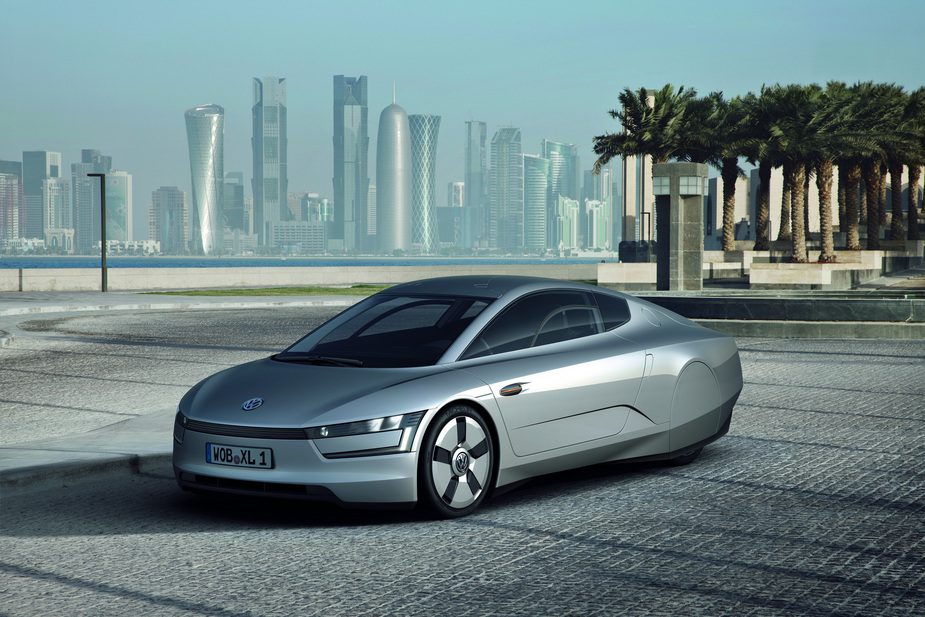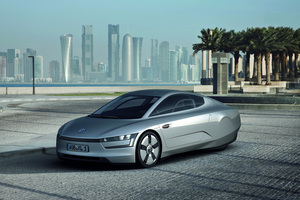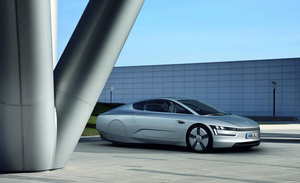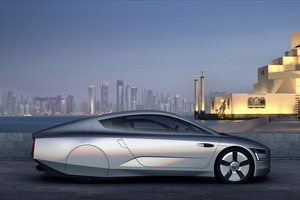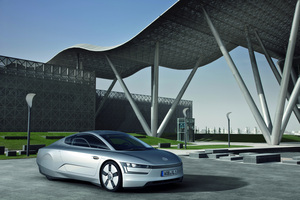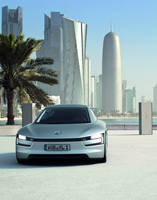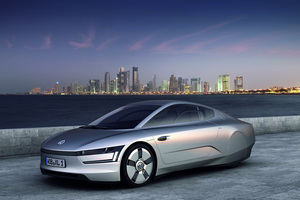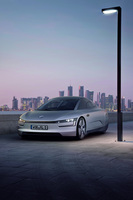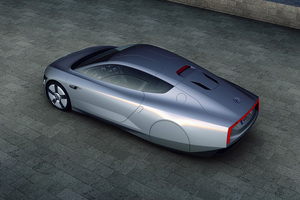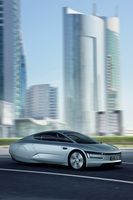|
Send this page to a friend! Fill in the form bellow | ||
news
VW XL1: concept that consumes 0.9 l/100km presented in Qatar
© photo courtesy of: Volkswagen
Volkswagen has giving a big step towards fuel efficiency as the German brand will be premiering at the Qatar Motor Show (26 - 29 January) the XL1, a prototype that delivers a combined fuel consumption of 0.9/100km. This is a value that no other hybrid car powered by an electric motor / internal combustion engine combination is yet to achieve.
The XL1 stage 3 of a Volkswagen’s 1-litre car strategy, launched by Prof. Dr. Ferdinand Piëch, who is today Chairman of the Supervisory Board of Volkswagen AG. The goal was to launch into the market a vehicle built for everyday use with a fuel consumption of 1.0 litre per 100 km. With the XL1 Volkswagen is now proving that this target is getting closer.
In the study vehicle being presented in Qatar CO2 emissions have been cut to 24 g/km, thanks to a combination of lightweight construction, very low aerodynamic drag (Cd 0.186) and a plug-in hybrid system, which consists of a two cylinder TDI engine (35 kW / 48 PS), E-motor (20 kW / 27 PS), 7-speed dual-clutch transmission (DSG) and lithium-ion battery.
The XL1 prototype can also be driven in pure electric mode for about 35 kms thanks to its plug-in hybrid system, in this case producing zero emissions. The battery can be charged from a conventional household electric outlet and Volkswagen has also included battery regeneration with the recovery of energy while the car is slowing down. In this case the electric motor acts as an electric generator as this energy is stored in the battery for re-use.
Developers have also worked on the everyday practicality of the concept body layout. In this case, as opposed to the tandem arrangement seen in both the first 1-litre car presented in 2002 and the L1 presented in 2009, the XL1 has incorporated side by side seating.
In order to make it easier to enter and exit the car, the XL1 has been fitted with wing doors. Volkswagen has also used a technique used in Formula 1 car construction, the use of body parts made of carbon fibre reinforced polymer parts (CFRP). The German brand also achieved significant reductions in production costs, which would make a limited production of the XL1 more viable.
Encyclopedia | Engine -- Displacement -- Top Speed -- Transmission -- Maximum power -- Type -- Fuel -- Fuel consumption (combined) 313.89 UK MPG | price -- annual ownership cost -- |
Contribute
more about Volkswagen



latest news




